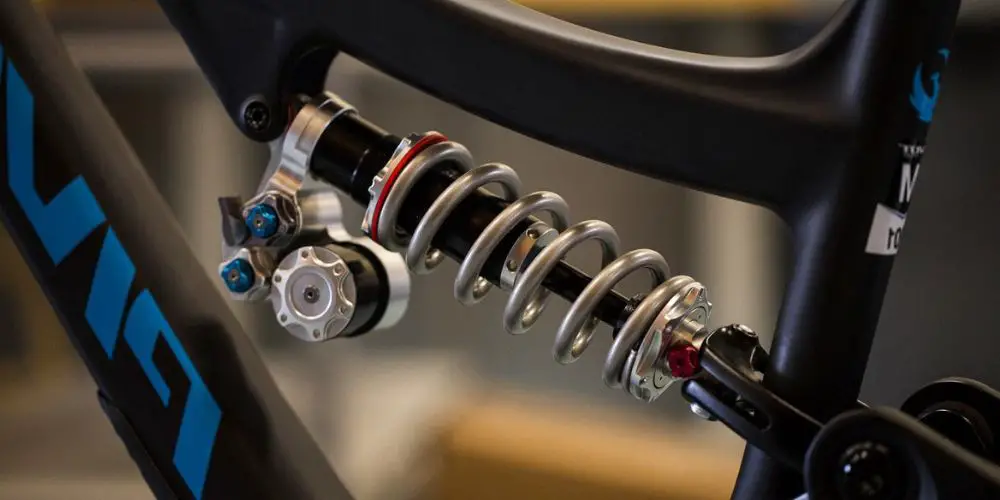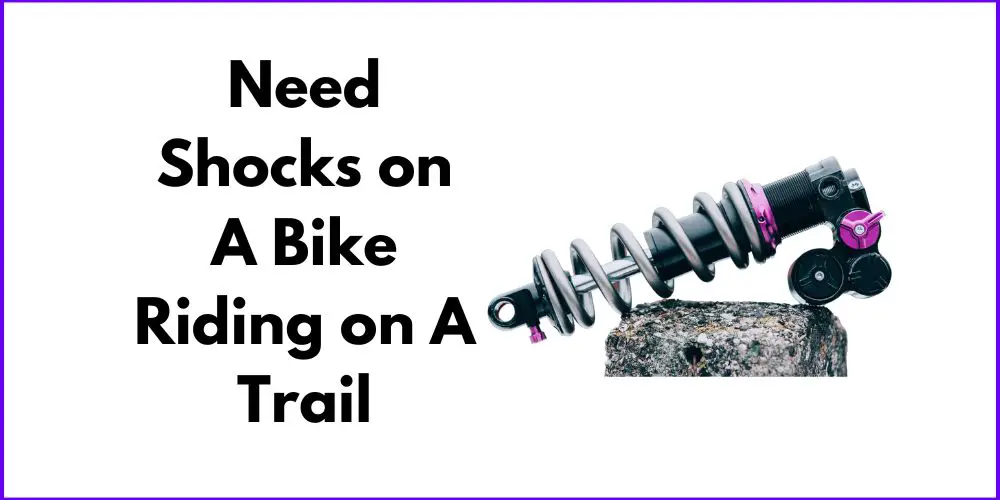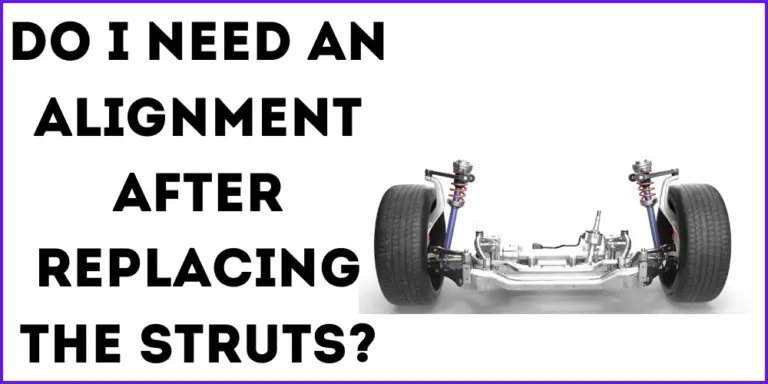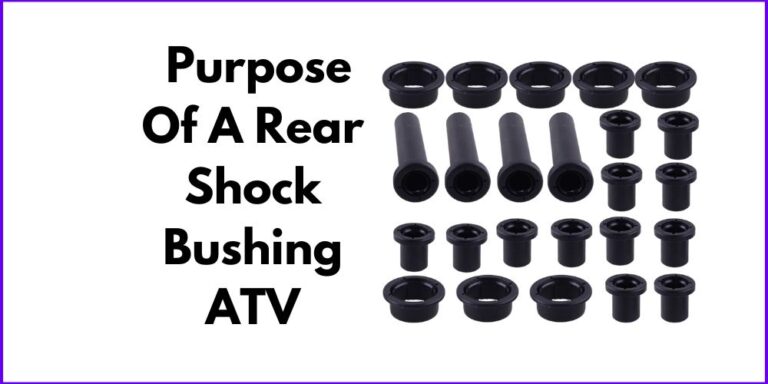Trail riding has gained immense popularity among cyclists, but it also brings its fair share of challenges. One key consideration for riders is whether shocks on their bikes are necessary. Shocks are suspension systems that absorb impacts and vibrations, providing a smoother ride. In this blog post, we’ll explore the purpose of shocks and examine whether they are essential for trail riding. By understanding the unique demands of trail riding and the benefits of shocks, you can make an informed decision about your bike setup. Let’s dive into the world of shocks and uncover the truth about their relevance on the trails.
Do You Need Shocks on A Bike when Riding on A Trail?

Trail riding involves cycling off-road and presents various types of trails. These trails can range from smooth to rocky and technical. The type of trail impacts rider comfort and bike performance. Smooth trails may not require shocks, while rocky and technical trails greatly benefit from them. Without shocks, riders may experience fatigue and discomfort, and the bike may endure additional stress. Shocks provide a smoother ride and enhance control on challenging terrain.
Benefits of Shocks on Trail Riding
Enhanced rider comfort and reduced fatigue:
One of the significant benefits of shocks on trail riding is the enhanced rider comfort they provide. When riding on rough and uneven terrain, shocks absorb the impact of bumps and vibrations, reducing the strain on your body. Without shocks, every jolt and impact would be directly transmitted to your hands, arms, and body, leading to fatigue and discomfort. With shocks, the suspension system absorbs much of the impact, resulting in a smoother and more comfortable ride. This increased comfort allows you to ride for longer durations without feeling as fatigued, ultimately enhancing your overall trail riding experience.
Improved bike handling and stability:
Shocks play a vital role in improving bike handling and stability on the trails. When riding over obstacles such as rocks, roots, or uneven surfaces, shocks help maintain better contact between the tires and the ground. This improved traction allows you to navigate challenging terrain with greater control and confidence. The suspension system helps to keep the bike stable by reducing the likelihood of losing control or getting thrown off balance due to sudden impacts. With shocks, you can maintain better control over your bike, making it easier to handle tight turns, technical sections, and steep descents.
Increased traction and control on rough terrain:
Trail riding often involves encountering rough and unpredictable terrain, where maintaining traction is crucial. Shocks help improve traction by keeping the wheels in contact with the ground, even on uneven surfaces. When riding over rocks, roots, or loose gravel, shocks absorb the impact and help prevent the wheels from bouncing or slipping. This increased traction translates into better control and responsiveness, allowing you to confidently navigate challenging sections of the trail. Additionally, shocks help to distribute the rider’s weight more evenly, enhancing stability and control during climbs and descents.
Factors to Consider
Skill level and riding style:
When considering whether shocks are necessary for trail riding, it’s important to take your skill level and riding style into account. Beginner riders or those who prefer less technical trails may find that a bike without shocks suits their needs just fine. On the other hand, more experienced riders or those who enjoy tackling rugged and challenging trails may benefit significantly from the added comfort and control provided by shocks. Assess your skill level and riding preferences to determine how much impact shocks will have on your overall trail riding experience.
Trail conditions and difficulty:
The type of trails you ride on and their difficulty level can also influence the need for shocks. If you frequently encounter rough, rocky, or technical trails, shocks can make a substantial difference in your riding experience. These trails tend to have more bumps and obstacles that can cause discomfort and affect bike handling. In contrast, if you primarily ride on smoother, well-maintained trails, the necessity of shocks may be less pronounced. Consider the specific trail conditions and difficulty levels you typically encounter to determine whether shocks are worth the investment.
Cost and maintenance of shocks:
Another factor to consider is the cost and maintenance associated with shocks. Shocks can add to the overall cost of a bike, and higher-end models with advanced suspension systems can be quite expensive. Additionally, shocks require regular maintenance and occasional servicing to ensure optimal performance. Consider your budget and willingness to invest in the initial purchase and ongoing maintenance of shocks. It’s essential to weigh the potential benefits against the associated costs to make an informed decision.
By considering your skill level, riding style, trail conditions, and the cost and maintenance of shocks, you can determine whether they are necessary for your trail riding adventures. Evaluating these factors will help you find the right balance between comfort, performance, and budget as you make a decision about shocks on your bike.
FAQs on Shocks on Trail Riding
Do you need shocks on a mountain bike?
Most mountain bikes come equipped with suspension systems to handle rough terrain. However, the amount and type of suspension needed may vary for different riders. Hardtail mountain bikes don’t have rear shocks, while full suspension bikes feature both front and rear shocks.
Do I need full suspension for trail riding?
For smoother trails, a hardtail mountain bike can provide sufficient grip. The tire compliance offers traction on smoother terrain, and you may only notice the difference when encountering rougher sections. However, a full suspension bike can instill more confidence on bumpy trails, enabling you to ride at faster speeds.
Do shocks cause a rough ride?
In normal circumstances, shocks on a bike are designed to improve ride quality by absorbing impacts and reducing vibrations. However, when the struts or shocks are damaged or worn-out, they can lead to a bumpy and unpleasant ride. It’s important to maintain and replace shocks as needed to ensure optimal performance.
Final Thoughts
To determine whether you need shocks on a bike for trail riding, consider your specific needs, preferences, and riding style. Full suspension bikes offer enhanced control on rough terrain, while hardtail bikes can suffice for smoother trails. The decision ultimately depends on the specific trails you ride and your desired level of comfort and performance. Strike a balance between personal preference and practicality to find the perfect setup for your trail riding adventures.








